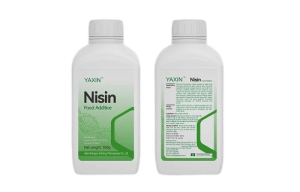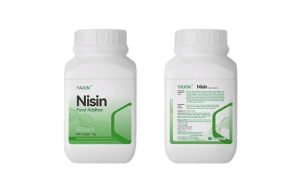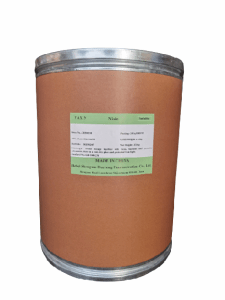
 CONTACT
CONTACT
- Linkman:Linda Yao
- Tel: +8618231198596
- Email:linda.yao@dcpharma.cn
- Linkman:CHARLES.WANG
- Department:Overseas
- Tel: 0086 0311-85537378 0086 0311-85539701
ε-Polylysine Hydrochloride Supplier,Production Process
TIME:2024-12-27The production process of ε-Polylysine Hydrochloride has a significant impact on the quality of the final product. Below is a detailed analysis of this impact:
I. Production Process Overview
The production process of ε-polylysine hydrochloride typically involves fermentation, extraction, purification, drying, and packaging. Each of these steps can have a critical influence on the quality of the final product:
·Fermentation: Under appropriate conditions, *Streptomyces albulus* is used for fermentation to produce ε-polylysine.
·Extraction: ε-Polylysine is extracted from the fermentation broth through processes such as ion-exchange resin adsorption and desorption.
·Purification: Suitable purification methods, such as membrane separation and crystallization, are employed to remove impurities and improve product purity.
·Drying: The purified ε-polylysine undergoes drying to remove moisture and enhance product stability.
·Packaging: The dried ε-Polylysine Hydrochloride is packaged to ensure its quality during storage and transportation.
II. Specific Impacts of the Production Process on Product Quality
1. Impact of Fermentation Conditions
·Factors such as fermentation temperature, pH, and dissolved oxygen directly affect the growth and metabolism of Streptomyces albulus, thereby influencing the production of ε-Polylysine Hydrochloride.
·Optimal fermentation conditions can increase the yield and purity of ε-Polylysine Hydrochloride, improving the quality of the product.
2. Impact of Extraction and Purification Methods
·The choice of extraction and purification methods directly affects product purity and impurity levels.
·Efficient extraction and purification processes can remove more impurities and increase product purity, ensuring the quality and stability of the product.
3. Impact of Drying Conditions
·Drying parameters such as temperature and duration influence the moisture content and stability of the product.
·Appropriate drying conditions ensure low moisture content, enhancing the product's stability and shelf life.
4. Impact of Packaging Material Selection
·The selection of packaging materials directly affects the quality of the product during storage and transportation.
·Using suitable packaging materials can protect the product from contamination and degradation, preserving its quality.
III. Recommendations for Optimizing the Production Process
·Optimize Fermentation Conditions: Precisely control fermentation parameters such as temperature, pH, and dissolved oxygen to enhance the growth and metabolic efficiency of Streptomyces albulus, thereby increasing the yield and purity of ε-polylysine.
·Improve Extraction and Purification Methods: Adopt advanced extraction and purification technologies, such as membrane separation, ultrafiltration, and crystallization, to improve product purity and remove more impurities.
·Control Drying Conditions: Select appropriate drying temperatures and durations based on product characteristics and requirements to achieve low moisture content and high stability.
·Use Suitable Packaging Materials: Choose appropriate packaging materials based on the product's properties and storage requirements to ensure protection against contamination and degradation during storage and transportation.
The production process of ε-polylysine hydrochloride plays a crucial role in determining product quality. By optimizing fermentation conditions, improving extraction and purification methods, and controlling drying and packaging conditions, it is possible to ensure the quality and stability of the product, meeting market demands and consumer expectations.
- Tel:+8618231198596
- Whatsapp:18231198596
- Chat With Skype







